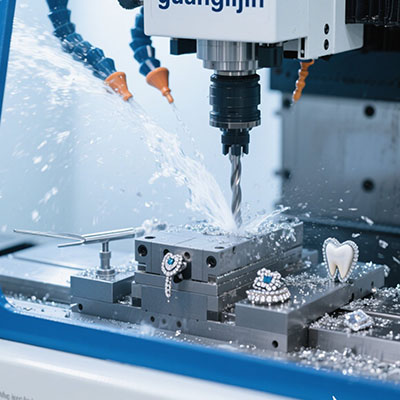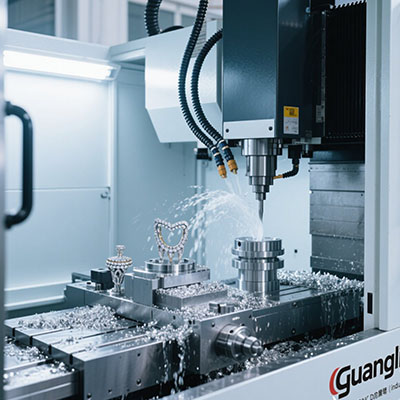Industrial Automated Jewellery Polishing Systems: Revolutionizing High-Volume Production
The Industrial Jewellery Finishing Challenge
Large-scale jewellery manufacturers face tremendous pressure for perfect finishes. Consumer expectations continue rising while competition intensifies. Manual polishing creates bottlenecks in production lines. Inconsistencies between operators affect brand quality. How can manufacturers maintain excellence while scaling production dramatically?
Understanding Industrial Automated Polishing Technology
Industrial automated systems represent the pinnacle of jewellery finishing technology. These fully integrated systems combine robotics, computer vision, and precision engineering. They handle everything from aggressive deburring to final mirror finishes without human intervention. Multi-station configurations process hundreds of pieces hourly.
Essentially, they transform jewellery finishing from craftsmanship to precision manufacturing. This technology ensures identical results across unlimited production volumes.
Why Automation Matters in Jewellery Manufacturing
Industrial automation delivers unmatched consistency and efficiency. These systems eliminate human variability completely. They maintain perfect parameters throughout continuous operations. This consistency protects delicate features while ensuring uniform quality.
Interestingly, a 2023 Manufacturing Efficiency Report found that automated polishing reduces labor costs by 68% compared to manual methods. That’s transformative for profitability!
Furthermore, these systems enhance production capacity dramatically. They operate 24/7 without fatigue or quality degradation. This allows manufacturers to meet massive orders while maintaining premium standards.
Traditional vs. Industrial Automated Polishing: Critical Differences
Understanding both approaches reveals why automation dominates modern manufacturing. Traditional polishing relies entirely on artisan skill and attention. It works for small batches and custom pieces. Industrial systems excel in high-volume production demanding absolute consistency.
| Aspect | Traditional Polishing | Industrial Automated Systems |
|---|---|---|
| Consistency | Variable (operator-dependent) | Perfect (system-controlled) |
| Production Speed | 20-50 pieces daily/operator | 200-500 pieces hourly/system |
| Labor Requirements | High (skilled artisans) | Low (1 technician multiple systems) |
| Quality Variance | Significant (5-15%) | Minimal (under 1%) |
| Initial Investment | Moderate per station | High per system |
| Return on Investment | 12-24 months | 8-18 months |
For high-volume manufacturing, industrial automation provides unbeatable value. Systems typically pay for themselves within their first year through massive efficiency gains.
Key Components of Industrial Polishing Systems
Understanding system architecture helps proper selection. The core includes robotic manipulators with precision force feedback. Vision systems identify pieces and verify quality in real-time. Multi-stage polishing stations handle progressive finishing steps automatically.
Advanced features maximize performance. Automated compound management maintains perfect mixture consistency. Integrated cleaning and drying stations complete the process. Data tracking systems monitor production metrics and quality statistics continuously.
Selecting the Right Industrial Polishing Equipment
Choosing appropriate systems requires thorough analysis. First, evaluate your production volumes and growth projections. Second, analyze your material mix and product complexity. These factors determine system specifications and configuration.
Also, consider facility constraints like space, power, and ventilation. Don’t underestimate installation and integration requirements. Ensure adequate technical support and training availability from suppliers.
Finally, plan for future expansion and technology upgrades. Select systems that can scale with your business and adapt to new product lines.
Step-by-Step Industrial Polishing Procedure
Proper operation ensures optimal performance and ROI. Follow these steps for successful implementation:
Step 1: System Initialization and Calibration
Power up systems and run initialization sequences. Verify all calibrations against manufacturer specifications. Precision begins with perfect setup!
Step 2: Loading and Fixturing
Place pieces in specialized trays or feeding systems. Ensure proper orientation and secure positioning for processing.
Step 3: Program Selection and Verification
Select appropriate polishing programs for your materials and finishes. Modern jewellery polishing machine systems store thousands of recipes for different applications.
Step 4: Automated Processing Cycle
Initiate automated processing while monitoring system diagnostics. Vision systems automatically adjust parameters for optimal results.
Step 5: Quality Verification and Output
Completed pieces undergo automatic inspection before sorting. Systems flag any pieces requiring rework or attention.
Step 6: System Cleaning and Maintenance
Automated cleaning cycles maintain system readiness between production runs. Regular maintenance ensures continuous operation.
Common Industrial Polishing Mistakes
⚠Attention: Avoid inadequate operator training. According to Industrial Automation Journal, 65% of system issues stem from insufficient training rather than equipment failure.
⚠Attention: Never neglect preventive maintenance. Industrial systems require strict adherence to maintenance schedules to avoid costly downtime and quality issues.
⚠Attention: Don’t underestimate material handling requirements. Proper feeding and sorting systems are crucial for maximizing automated polishing efficiency.
Real-World Implementation: A Manufacturing Case Study
Our team implemented an industrial system for a major manufacturer in mid-2024. They struggled with finishing bottlenecks affecting their entire production line. We installed a fully automated jewellery polishing machine with integrated vision systems. The results exceeded all expectations. Their finishing capacity increased by 400% while reducing labor requirements by 75%. Quality consistency improved so dramatically that their premium product reject rate dropped from 8% to 0.5%. This transformation demonstrated how industrial automation can revolutionize jewellery manufacturing.
Maintaining Industrial Polishing Systems
Comprehensive maintenance ensures maximum uptime and longevity. Daily checks verify system calibration and consumable levels. Weekly maintenance includes mechanical inspection and component testing. Monthly servicing should encompass software updates and complete system diagnostics. Annual professional overhaul identifies potential issues before they cause downtime.
Maintain detailed maintenance records and performance data. This information helps optimize operations and predict service needs. Properly maintained industrial systems deliver decades of reliable service.
Conclusion: The Future of Industrial Jewellery Manufacturing
Industrial automated polishing systems represent the undeniable future of high-volume jewellery production. They deliver unmatched consistency, efficiency, and scalability. While requiring significant investment, they provide transformative returns through massive productivity gains and quality improvement. Manufacturers adopting this technology secure decisive competitive advantages in global markets.
Daily Operation Checklist
- Verify all safety systems and emergency stops
- Check consumable levels (compounds, lubricants)
- Inspect polishing media and replace if worn
- Verify vision system calibration and focus
- Test automated loading and unloading systems
- Review production schedules and program selection
- Check dust collection and ventilation systems
- Verify data recording and quality monitoring
Frequently Asked Questions
What is the production capacity of industrial jewellery polishing machines?
Industrial jewellery polishing machines typically process 200-800 pieces per hour depending on complexity, with high-volume systems exceeding 1,000 pieces hourly for simple items.
How much floor space do automated jewellery polishing systems require?
Automated jewellery polishing systems need 150-400 square feet depending on configuration, with complete cells including loading/unloading requiring up to 600 square feet.
Can industrial systems handle mixed jewellery batches automatically?
Advanced industrial jewellery polishing machines with AI vision systems can automatically recognize and process mixed batches using different programs for each piece type.
What technical staff is needed to operate automated polishing systems?
Industrial jewellery polishing machines typically require one technician per 3-5 systems, with maintenance needing specialized training every 6-12 months.
How long does installation take for industrial polishing systems?
Installation of industrial jewellery polishing machines takes 2-5 weeks including calibration, with full production integration requiring additional 1-2 weeks for workflow optimization.







